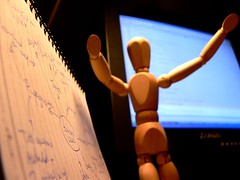
In reviewing the Personality Profiles written by my PR Writing students over the last several semesters, I’ve discovered that there are several common errors that seem to show up. Avoiding these common errors will help ensure that someone might actually want to read the story you have written.
- Treating the story as if it’s a pre-obituary… you know, the obituaries that newspapers and TV stations have waiting, just in case someone famous dies. They tend to simply recite a few key facts from the person’s life. These pre-obituaries, posing as personality profiles for my class, are flat and fail to engage the readers. Yawn.
- Telling the story in chronological order.Just because we live our lives in chronological order doesn’t mean that is how the stories should be told.
- Writing a snoozer of a headline. Something like “A True Leader in Our Community!” is not something that would entice someone to read the story.
- Not reading well-done personality profiles before starting out to write one. People magazine and Sports Illustrated always have numerous profiles in each issue.
- Not interviewing the person you’re writing about. You can typically learn more about your subject in a face-to-face interview in 30 minutes than you can by reading things others have written for three hours. (Okay, I made up those numbers, but you get my point.) Spend some time learning who the person IS, and then you can better write about what the person DOES.
- Lack of quotations. Using the words of the subject of the story and those who know the person well can bring the story to life. Aim to incorporate quotations in every three to four paragraphs. They don’t need to be long ones, just ones that punctuate the point you are trying to make.
- Using the first paragraph or two to recite the subject’s job description. Try leading off with something that might be interesting to the readers instead. You can add in bits and pieces of the job description throughout the story if needed, but please don’t lead with them.
- Focusing on only one part of the subject’s life. In addition to describing the subject’s connection with the client organization, it’s smart to also sprinkle in some details about outside interests.
- Making the subject seem superhuman or saccharine. Even if the story is for your internal company newsletter, it’s important to make the subject seem like a real person that others can aspire to becoming like. If you put the subject too high on a pedestal, there’s the danger of creating a persona that is not likable.
- Failing to use standard news release format. Remember that a personality profile is just a specific type of news release. Datelines, contact information, -MORE-, slugs, end signs and perhaps even boilerplate information are still needed.
- Neglecting AP Style. See my post on 8 Common Errors for more details on this.
What other tips would you add for creating an effective personality profile?









